All Posts
The Silent Listener: How AI Notes Capture What Patients Really Mean
In 2025, healthcare is really changing at a rapid pace, but there's one skill that hasn't lost its importance: listening. Every doctor knows that what patients express can often be different from what they truly feel. A simple sigh, a pause, or even a shift in tone can sometimes say more than the actual words. Yet, in this age of electronic health records and busy schedules, it seems like doctors are spending more time typing than actually listening to their patients. Enter AI-powered medical scribes—think of them as the silent partners in the room. These smart systems don’t just jot down notes; they interpret and summarize conversations, helping doctors grasp not just the words, but also the emotions and context behind them. In this blog, we’ll take a look at how AI notes are starting to reveal what patients really mean, bridging that gap between human empathy and machine intelligence—while still keeping everything compliant, accurate, and trustworthy in clinical documentation.
.png&w=3840&q=75)
Leveraging Scribe for Compliance & Audit-Ready Documentation in 2025
In 2025, businesses from every corner of the industry are feeling the heat to keep their records in check. The regulations just seem to keep changing, right? Whether you're in finance, healthcare, IT, or any other field, having accurate, easy-to-access, and audit-ready documentation is more crucial than ever. That's where Scribe comes in—a next-gen, AI-powered documentation tool that's shaking things up in how organizations capture, manage, and share their processes. In this blog, we’re diving into how Scribe is transforming compliance and audit documentation. It’s all about helping teams stay on top of regulatory requirements while also making things more efficient and less risky.
_11zon%2520(2).jpg&w=3840&q=75)
Streamline Onboarding With Scribe: Using AI to Capture Workflows in 2025
In today’s fast-paced business world, there’s a lot of pressure on organizations to get new hires up to speed quickly, keep processes consistent, and lighten the load on HR and operations teams. Let’s be real—those old-school onboarding methods, like paper forms, endless email threads, and static checklists? They just don’t cut it anymore. They tend to be slow, filled with errors, and often leave new hires feeling a bit lost. So, here’s where Scribe steps in. It’s an AI-driven tool that documents workflows automatically, capturing what users are doing and turning that into easy-to-follow instructions. This can really help standardize how knowledge is shared across your organization. In this blog, we’re going to dig into how Scribe can make onboarding smoother, how AI can capture workflows, and what strategies you should consider for 2025 to keep your onboarding process efficient and ready for the future. Here’s what we’ll dive into: - Why traditional onboarding processes are falling short - How AI and workflow capture are shaping modern onboarding - The ways Scribe enhances onboarding workflows - A practical guide for implementation - Key metrics and best practices - Challenges, considerations, and future trends
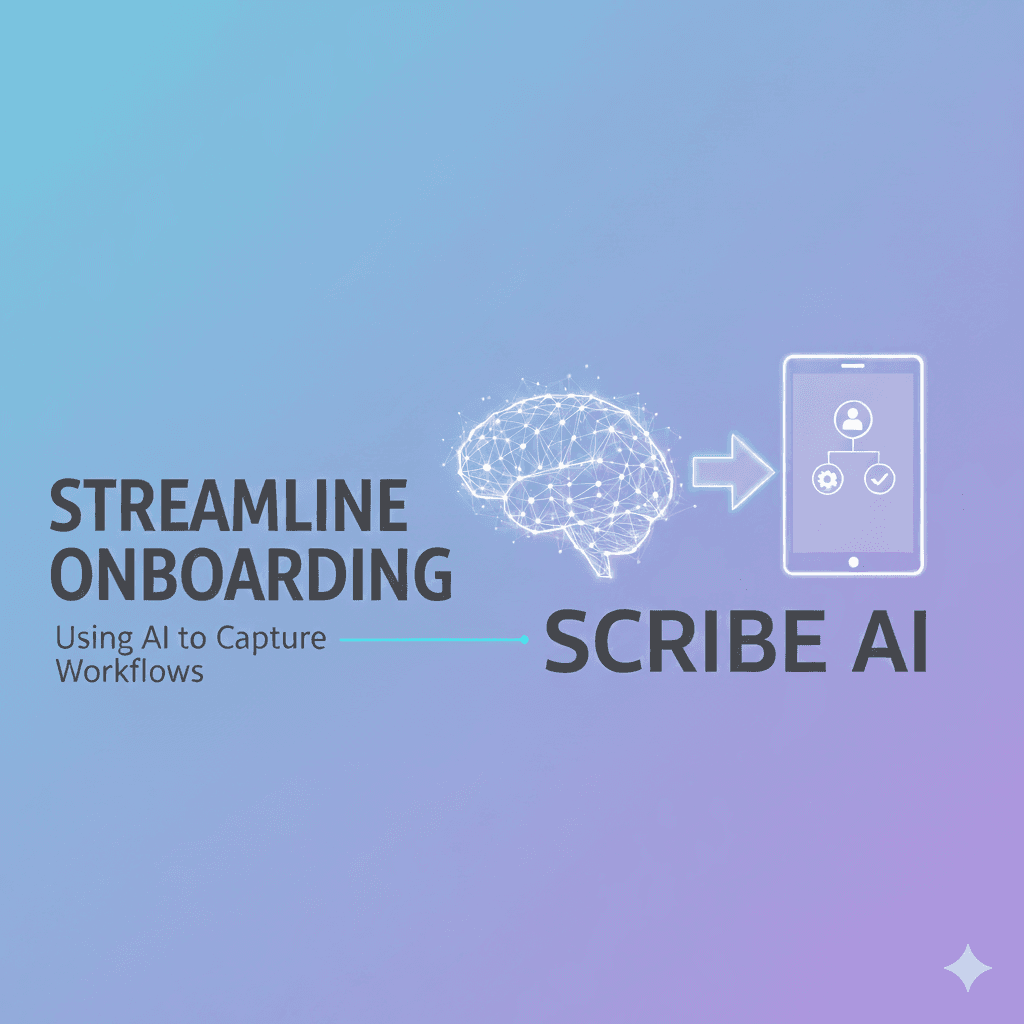
Voice-First Medicine: The Role of AI in Transforming Speech into the Primary Input Method in Healthcare
Healthcare is really shifting gears these days. We're moving away from just typing everything in with a keyboard and mouse to a more natural, voice-first approach. Imagine clinicians talking like they usually do, and then AI jumps in to turn that speech into organized, actionable clinical records. This voice-first medicine trend—thanks to advancements in automatic speech recognition (ASR), natural language understanding (NLU), and ambient clinical intelligence (ACI)—is all set to cut down on those late-night charting sessions, enhance the quality of documentation, and give clinicians back some precious time to focus on their patients.
_11zon%2520(5).jpg&w=3840&q=75)
Is it Possible for AI to Maintain Confidentiality? Exploring Trust in AI Scribe
AI-powered scribes have come a long way, moving from those lab demos we used to see to actually being used in clinical settings on a large scale. These ambient AI scribes listen in on clinical encounters and whip up draft notes, which are now being plugged right into EHR workflows. Sounds great, right? They promise to cut down on clinician burnout and speed up the documentation process. But here's the kicker—clinicians, compliance officers, and patients alike are all wondering: Can AI really keep patient data safe and confidential? The truth is, it’s not just a simple yes or no. It really depends on how the system is designed, how it’s deployed, the contracts in place, and ongoing risk management. Recent studies and data show that there’s been a quick uptake of these tools, but also a growing focus on the privacy risks involved. So, in this blog, we’re going to dive into the technical, regulatory, and operational angles of how AI scribes can keep things confidential—and where they might fall short.
_11zon%2520(1).jpg&w=3840&q=75)
Capturing the Emotional Landscape: How AI Scribes Handle Mood, Affect, and Nuance in Therapy Notes
In 2025, the U.S. mental health ecosystem finds itself at a crossroads. The demand for behavioral health services is growing rapidly, while clinicians increasingly struggle under the burden of documentation, regulatory compliance, and the need to preserve therapeutic presence. AI scribes—often marketed under terms like “ambient clinical intelligence,” “therapy note automation,” or “AI therapy scribes”—are promising to transform how therapists capture session data. But can they do more than transcribe words? Can they faithfully record mood, affect, and nuance—those subtle emotional signals that often make the difference between a superficial note and a clinically meaningful record? In this post, I draw on hands-on experience, literature, and real-world product reviews to explore how modern AI scribes approach emotional nuance, where they succeed, where they risk failing, and how therapists can deploy them responsibly. My goal is to help U.S. mental health providers in 2025 understand both the power and the pitfalls of emotion-aware AI in therapy documentation.
.jpg&w=3840&q=75)
The Science of Listening: How Scribe AI Converts Conversations into Clinical Gold
Listening has turned into one of the most useful, and time-consuming skills that a doctor has to master in the modern healthcare ecosystem. Since the process of deciphering patient anxieties to providing correct information to adhere to compliance, clinical listening is no longer merely about empathy, but precision, interpretation and promptness. However, as administrative demands are increasing, physicians are spending more time in documenting than in their interactions with patients. That is where Scribe AI comes in. Scribe AI uses a combination of state-of-the-art Natural Language Processing (NLP), speech recognition and medical language understanding to turn doctor-patient conversations into formatted, meaningful clinical data. It does not simply transcribe, but interprets, organizes and improves communication to generate actionable documentation that drives improved care delivery. This blog goes behind the scenes to uncover how Scribe AI can listen, and how this technology is able to transform spoken words into what can only be termed as clinical gold, accurate, contextual, and ready-to-use data, which saves time, burnouts, and leads to better patient outcomes.
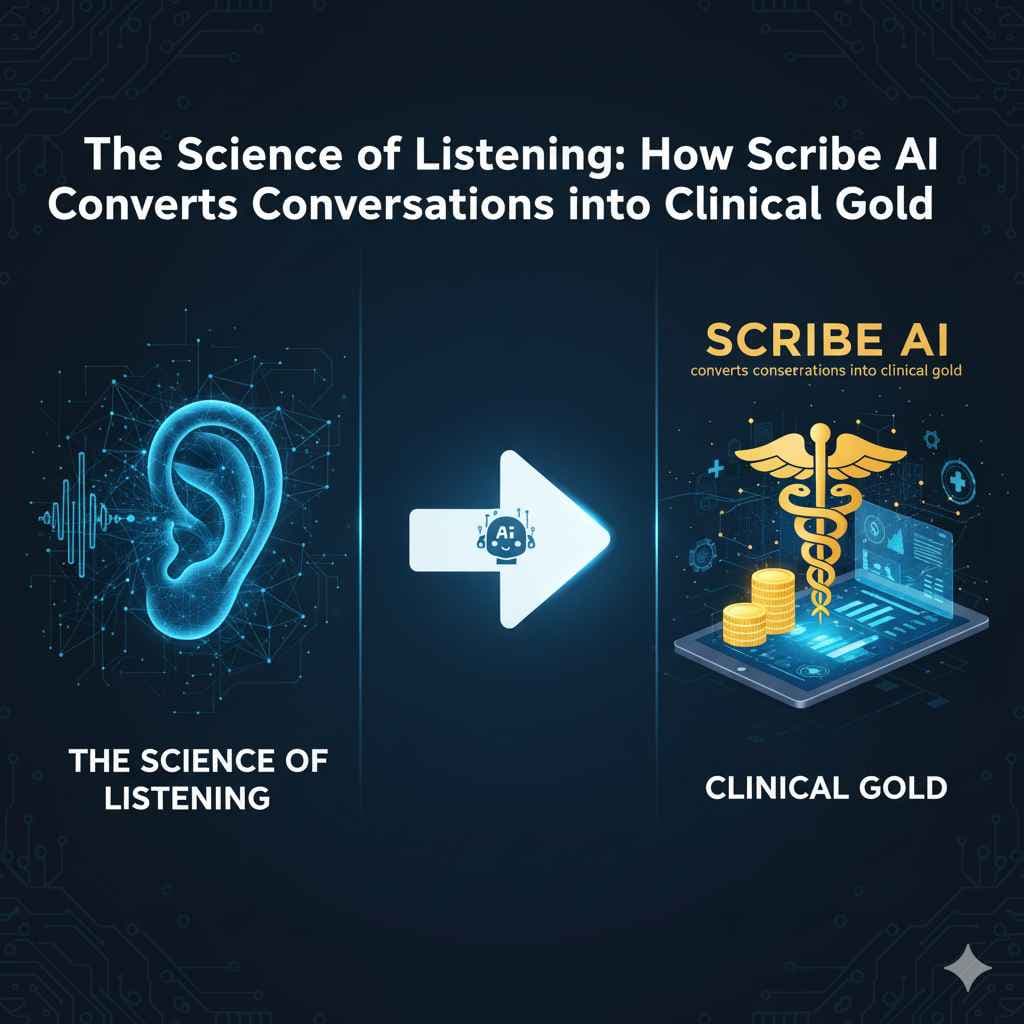
Inside Scribe’s AI Engine: How It Understands the Language of Medicine
In the modern hectic healthcare setting, doctors are overwhelmed with activities and responsibilities such as diagnosing, recording, and providing care, in most cases subjected to a lot of pressure due to time. The result? Paperwork overload, exhaustion, and the growing need to find smarter and automated solutions. That is where ScribeAI comes in the picture, not as another transcription application, but as a clinical intelligence engine that actually speaks the language of medicine. As opposed to generic AI assistants, which read words out loud without any conceptual comprehension, AI engine in Scribe can think like a clinician, and this means that it can understand medical terminology and context, patient histories, and even the nuances in physician-patient conversations. It does not merely collect information but makes meaning, provides accuracy, and organizes structured documents that will be compatible with any Electronic Health Record (EHR) system. This blog will bring you to the core of the Scribe technology - how its AI engine breaks down the complicated world of medical terminology to provide relevant medical professionals with precise, contextualized and regulatory documentation.
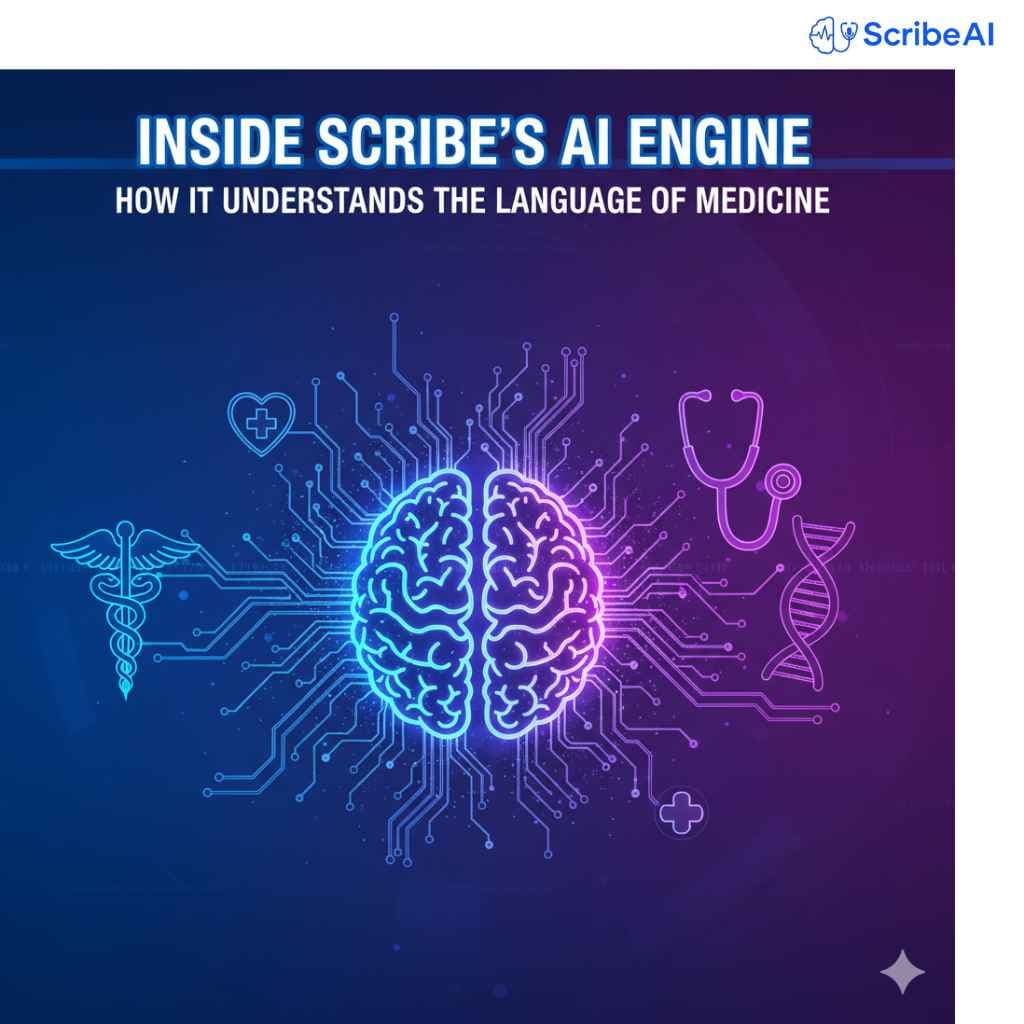
Say Goodbye to Copy-Paste Errors: How AI Enhances Documentation Accuracy
In healthcare and other data sensitive sectors, documentation forms the foundation of day-to-day business. The accuracy in documentation is what defines the efficiency of workflow as well as the quality of outcomes in terms of patient records and billing codes and in relation to legal contracts and compliance reports. However, the problem of copy-paste mistakes is one of the most inexorable problems that professionals can struggle with, but a little bit of action can result in enormous consequences. These errors are introduced into workflows in the form of shortcuts, and they are usually deployed at those moments when time constraints require a note taking or data transfer. They have the ability to spread misinformation in medical records in the healthcare sector, misrepresent compliance reporting in the financial sector and falsely or redundantly alter outcomes in the research sector. Luckily, Artificial Intelligence (AI) is transforming this story. The use of intelligent automation and machine learning applications has enabled professionals to produce correct, repeatable, and context-sensitive documents, without the need to enter redundant data manually. In this blog, we shall discuss the role of AI in addressing copy-pastes, improving accuracy of data and changing documentation in industries.
.jpg&w=3840&q=75)
Physician Stories: How ScribeAI is Changing the Day-to-Day in the Clinic
All healthcare innovations claim to either save time or lessen burnout, yet only a small number of technologies have ever lived up to these claims, up until this point. Physicians in clinics and hospitals are telling a different type of story, one that is not about administrative burnout or end of day charting, but about reconnecting with patients and the renewed interest in medicine. The core of this change is ScribeAI, a smart medical documentation assistant to streamline the clinical workflow. It listens to the patient, comprehends and organizes the encounter with the patient to complete, compliant notes all the time letting doctors do the other best thing which is taking care of patients. This article discusses real-life experiences of physicians who have been exposed to the effect of ScribeAI on their daily practice. Small country clinics to big city hospitals, these narratives underscore the practical applications of AI to revolutionize the healthcare industry--one patient visit at a time.

How Scribe AI Can Simplify NextGen EHR Documentation
The Electronic Health Records (EHRs) become the cornerstone of the contemporary healthcare delivery. NextGen EHR is a highly adaptable, all-encompassing platform that can be used to facilitate clinical, financial and operational workflows, among the numerous solutions in the market today. Nevertheless, the problem of time-consuming documentation remains as a challenge to many healthcare providers regardless of their strong features. Doctors are increasingly wasting time typing notes, rather than engaging with patients, decreasing efficiency, increasing burnout and adversely affecting patient experience. That is where Scribe AI fits in. With NextGen EHR integration, Scribe AI will become a virtual medical assistant, automating and simplifying documentation workflows to allow providers to get back to doing what really counts; quality care. In this blog, we will discuss how Scribe AI will revolutionize NextGen EHR documentation, why it is advantageous, and why its adoption will make a breakthrough in healthcare practices.

titl
f

How Scribe AI can be integrated into Advanced MD EHR?
In the modern healthcare world, which is becoming extremely busy, clinicians are under greater pressure to deliver quality services to their patients, as well as handle a lot of administrative workloads. Clinical documentation is one of the duties of physicians that take the longest amount of time. Not only manual charting will be a waste of time but it can also be a source of errors and physician burnout. Luckily, there are potent solutions like Scribe AI that are based on the power of technological progress. When combined with Advanced MD EHR, Scribe AI is able to automate documentation, enhance workflow, and enhance clinical efficiency.
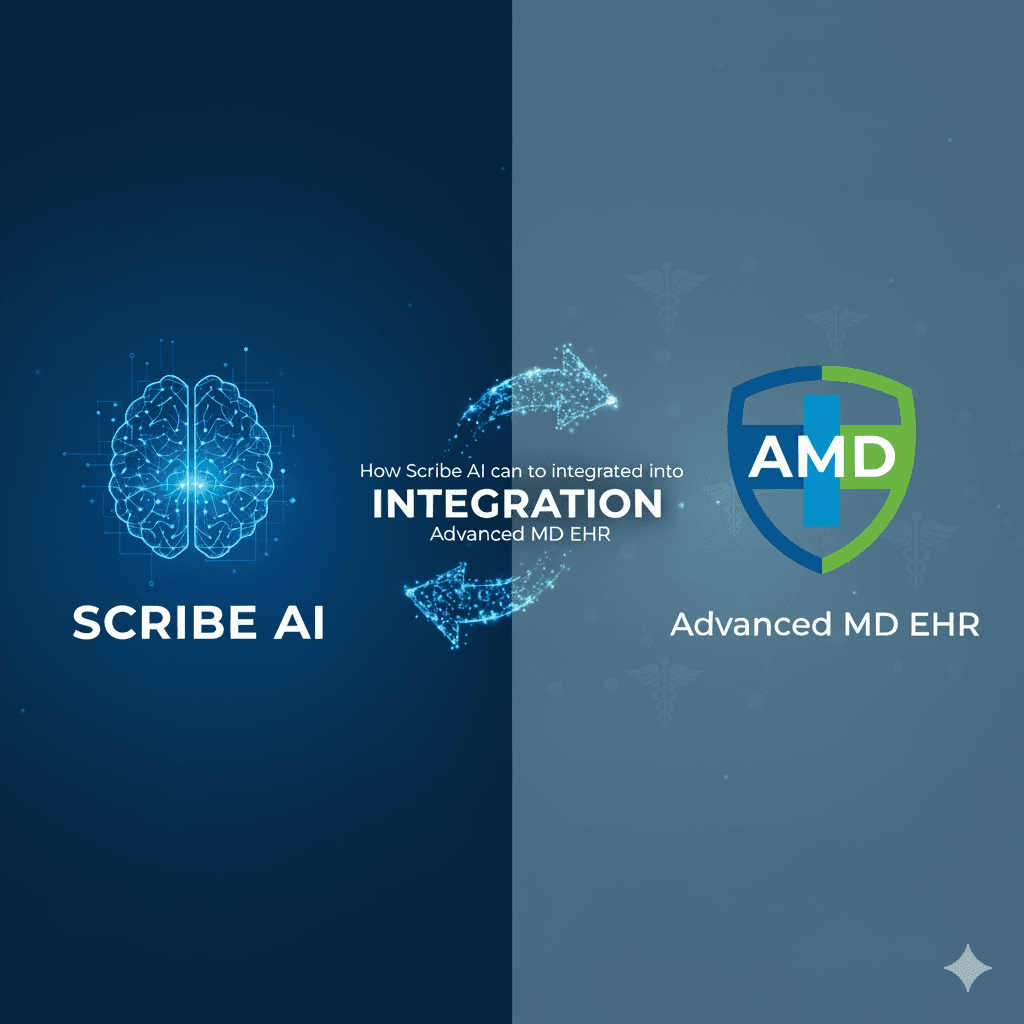
How Scribe AI Transforms Skilled Nursing Facilities
Skilled Nursing Facilities (SNFs) have become the core of the long-term and post-acute care in the United States. These centres accept patients requiring rehabilitation, long-term care and 24-hour assistance following their hospitalization. However, the excessive volume of clinical documentation is also one of the most topical issues of skilled nursing. Allied health professionals as well as nurses and physicians usually spend more time inputting data into Electronic Health Records (EHRs) than they do attending to residents. Scribe AI comes in at this point, a superior, AI-based medical scribe application. Through automation of clinical documentation, coding and note generation, Scribe AI decreases administrative load, enhances accuracy and liberates caregivers to do what they can best, provide caring, hands-on care. Here we will discuss how Scribe AI can revolutionize skilled nursing facilities, what this idea will entail to clinical staff, administrators, and patients, and why it is a game-changer in the future of healthcare.
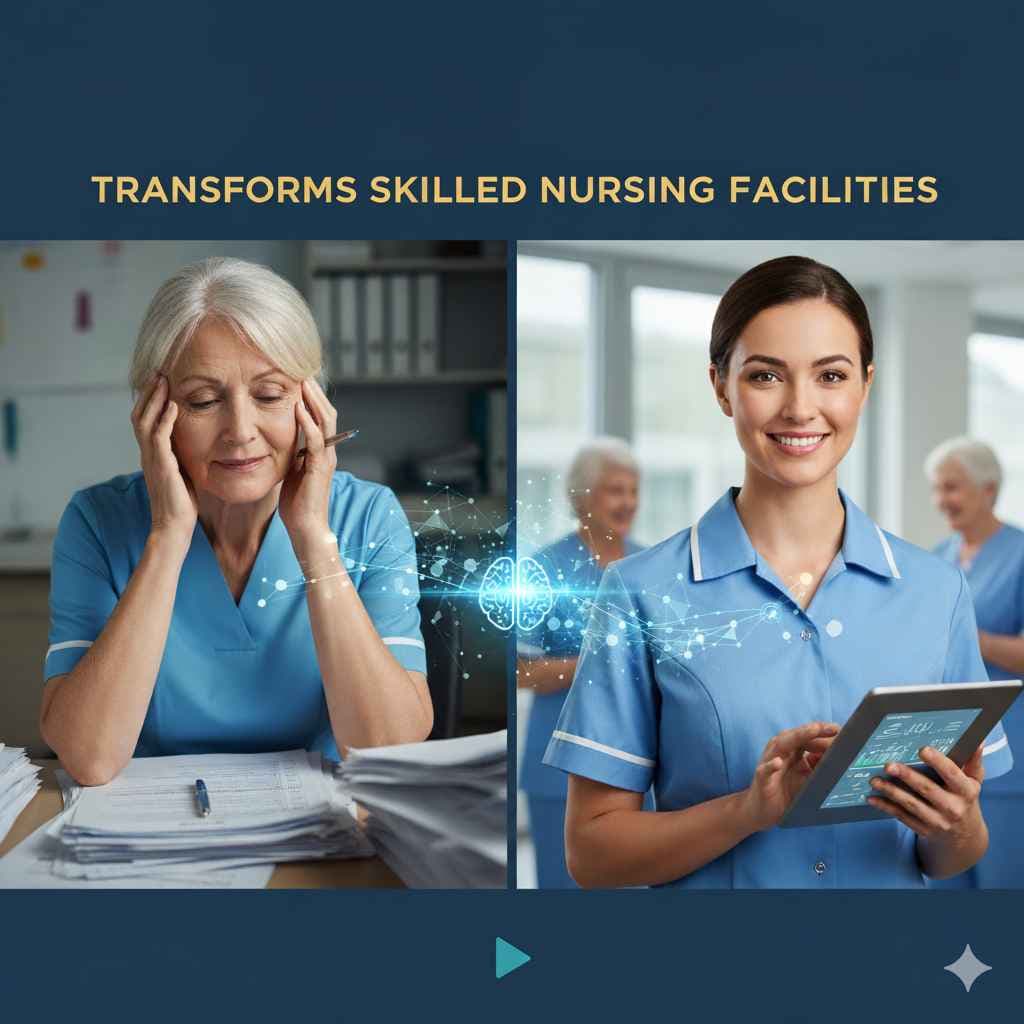
How Scribe AI Handles Diverse Medical Conversations
This blog explains, in practical detail, how modern AI systems — especially AI medical scribes — interpret, transcribe, summarize, and structure the wide variety of real-world clinical conversations that happen across specialties, settings, languages, and care modalities. It’s written for clinical leaders, informaticists, product teams, and practice managers who evaluate documentation technology and for clinicians curious how AI can safely reduce documentation burden while improving clinical value.
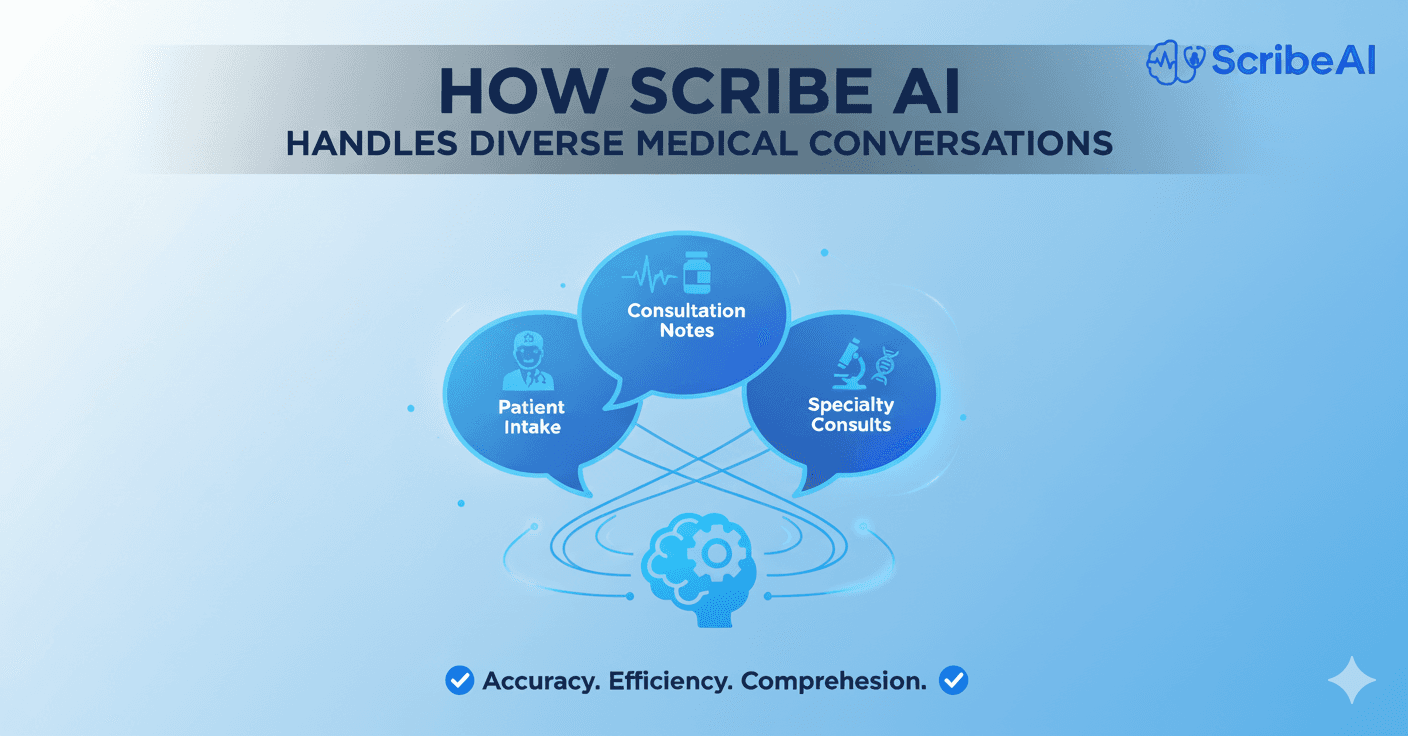
From Notetaker to Navigator: How AI Scribes Are Shaping the Future of Clinical Decision-Making
The healthcare sector is undergoing a historic revolution, and artificial intelligence (AI) is in the limelight of this revolution. Among the most promising technologies is the emergence of AI-based medical scribers, or digital assistants, which is more than transcription and proactively aids in clinical decision-making. Historically, medical scribes used to record patient interactions, make sure that the charts were accurate and release physician time. However, the newer group of AI scribes is entering into a more strategic space: assisting clinicians in their complex patient data, identifying risks, ensuring adherence, and even suggesting further actions in patient care. This blog will look at how AI scribes are becoming active navigators rather than passive notetakers of clinical workflows, patient outcomes, and healthcare decision-making, which is shaping the future of clinical workflows, patient outcomes, and healthcare decision-making. Their contribution to documentation, compliance, patient engagement, diagnosis support, and revenue cycle management and their implications to the larger healthcare ecosystem will be discussed.
_11zon.jpg&w=3840&q=75)
Medical Scribe for Legal Transcription vs Clinical Transcription
Documentation is no longer merely a pro forma in the current busy healthcare and legal settings, it is the foundation of compliance, accuracy, and communication. Transcription is important whether a physician records an encounter with a patient or a court reporter recording every word in a deposition. Although both legal and clinical transcription involve accuracy and high levels of attention to detail, they differ in the areas of purpose, terminology, regulations and skill sets. The role of medical scribes and AI-based transcription tools in either field makes this difference become even more applicable. This blog delves into the distinction of legal versus clinical transcription, how medical scribe fits into each and how the industry trends along with how a professional can be helped to understand which type of transcription solution to use.
_11zon.jpg&w=3840&q=75)
Scribe AI in Healthcare: Balancing Efficiency with Privacy & Compliance
AI medical scribes have become not a marginal project, but are changing clinical workflow, reclaiming clinician time and enhancing the quality of documentation. The deployment of ambient and assistant-style scribes in large health systems is associated with dramatic time-savings and clinician satisfaction, demonstrating how AI can re-establish the human element of medicine when usefully deployed. American Medical Association The legal and ethical consequences, however, are two-sided: patient data fell under the category of the most sensitive personal information, in the U.S. such data is safeguarded by a tangle of regulations (HIPAA, HHS OCR enforcement, FTC consumer-protection powers, state privacy laws). In the opinion of any healthcare organization looking to evaluate AI scribes in 2025 success will entail integrating technical excellence, air-tight privacy, risk management, and governance. This blog describes the regulatory environment today, technical and operational protective measures, vendor-assessment audit and checklist, and how Scribe assists organizations to balance efficiency and compliance.
_11zon.jpg&w=3840&q=75)
Boost Emergency Documentation Efficiency: Unlocking the Power of ScribeAI Health + EPOWERdoc Integration
The emergency departments (EDs) are one of the most challenging settings in the healthcare industry. The clinicians in emergency care are under special pressure, as patients arrive continuously, life-threatening cases, and high-pressure decisions have to be made, and documentation can be complicated in such contexts. Time is not only something precious, but it can be life and death. However, emergency physicians tend to work longer on prescribing than actually attempting to interact with the patients, which creates inefficiencies, burnout, and patient care gaps. Here ScribeAI Health, an AI-based medical scribing application, and EPOWERdoc, one of the most popular Emergency Department Information System (EDIS), form a strong synergy. They all transform the way emergency clinicians pursue documentation, allowing real-time transcription, flawless electronic health record (EHR) integration, and simplified workflows. The result? Efficiency, decreased burnout and most importantly, better patient care. In this blog, we are going to enter the realm of how ScribeAI Health and EPOWERdoc integration can empower emergency departments, open new horizons of efficiency, and become the key to the future of the emergency care documentation.
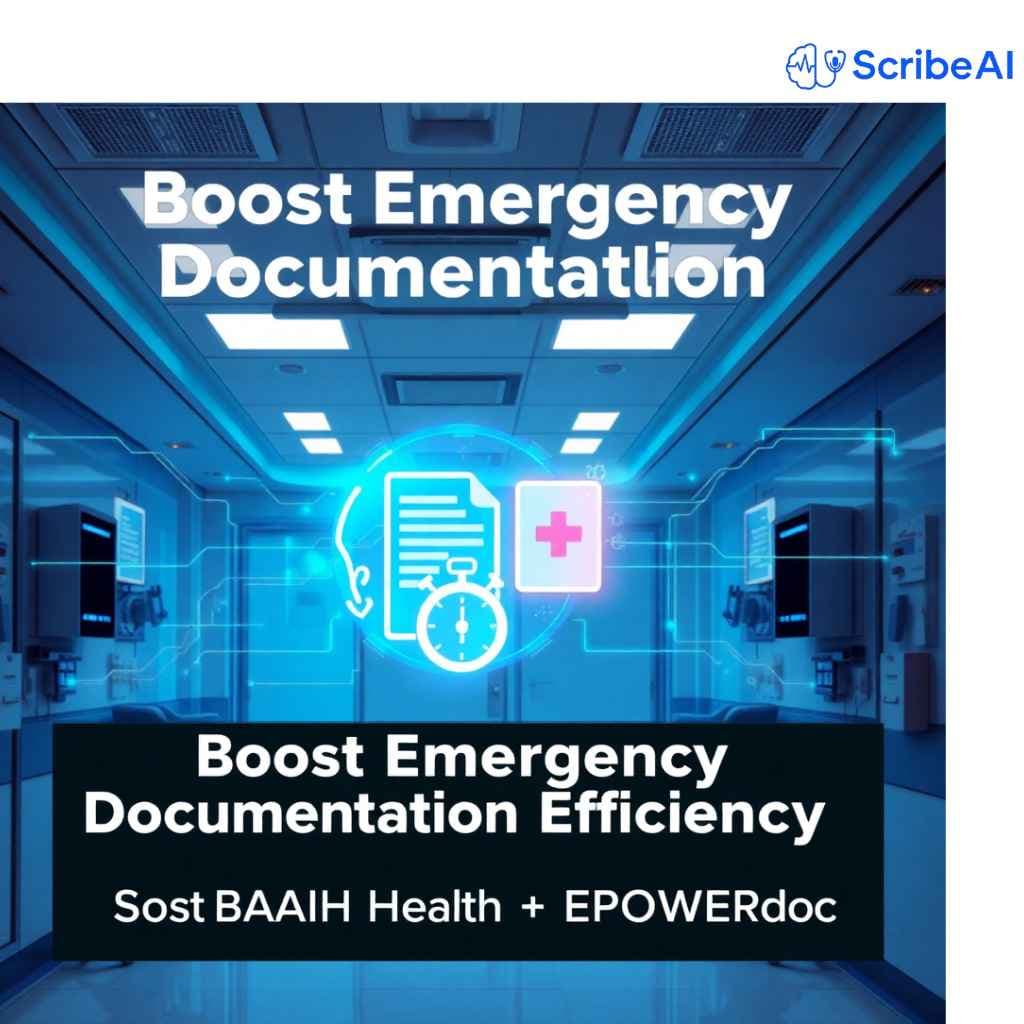
How Clinicians Save 8+ Hours Weekly with ScribeAI Health While Improving Patient Care?
Healthcare is a fast-changing environment, and technological advances are transforming the ways of care delivery and administration work of clinicians. The burdensome documentation is one of the most considerable problems clinicians are confronting nowadays. The research has shown that medical practitioners dedicate almost half of their time to the entry of information into the Electronic Health Records (EHRs). Not only does this deprive direct patient care of valuable time, it is also a reason behind burnout, stress, and decreased efficiency. Enter ScribeAI Health: a revolutionary medical scribing solution powered by AI and that is changing the landscape of clinical practice. ScribeAI Health will help clinicians to regain more than 8+ hours per week, improve medical records accuracy, and most importantly, patient care by automating and streamlining clinical documentation. This blog addresses how ScribeAI Health achieves this, how this affects healthcare providers, and why it is turning out to be a critical tool in contemporary medicine.
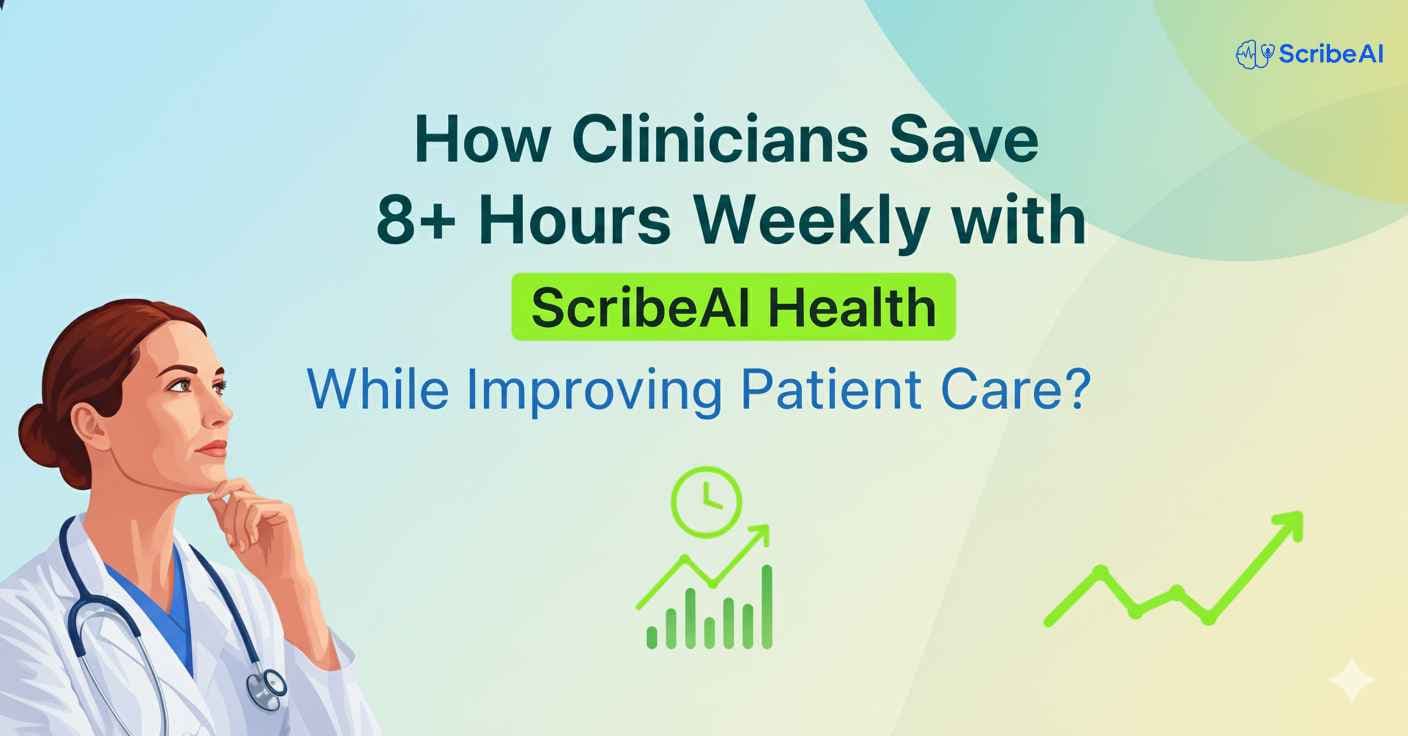
Built for Care, Protected by Design: How Scribe AI Health Safeguards Patient Privacy & Compliance
In the modern digital-first healthcare, the implementation of AI medical scribe technology presents a strong solution to clinicians to simplify documentation and improve healthcare documentation workflows. Nonetheless, privacy and regulatory compliance cannot be negotiated. The mission at Scribe AI Health is not only to allow data to be captured in real-time in the form of clinical notes, but to provide data protection within the entire system. This blog examines how our tool is carefully constructed to be care-giving and hedged in a design that is both effective and trusted.
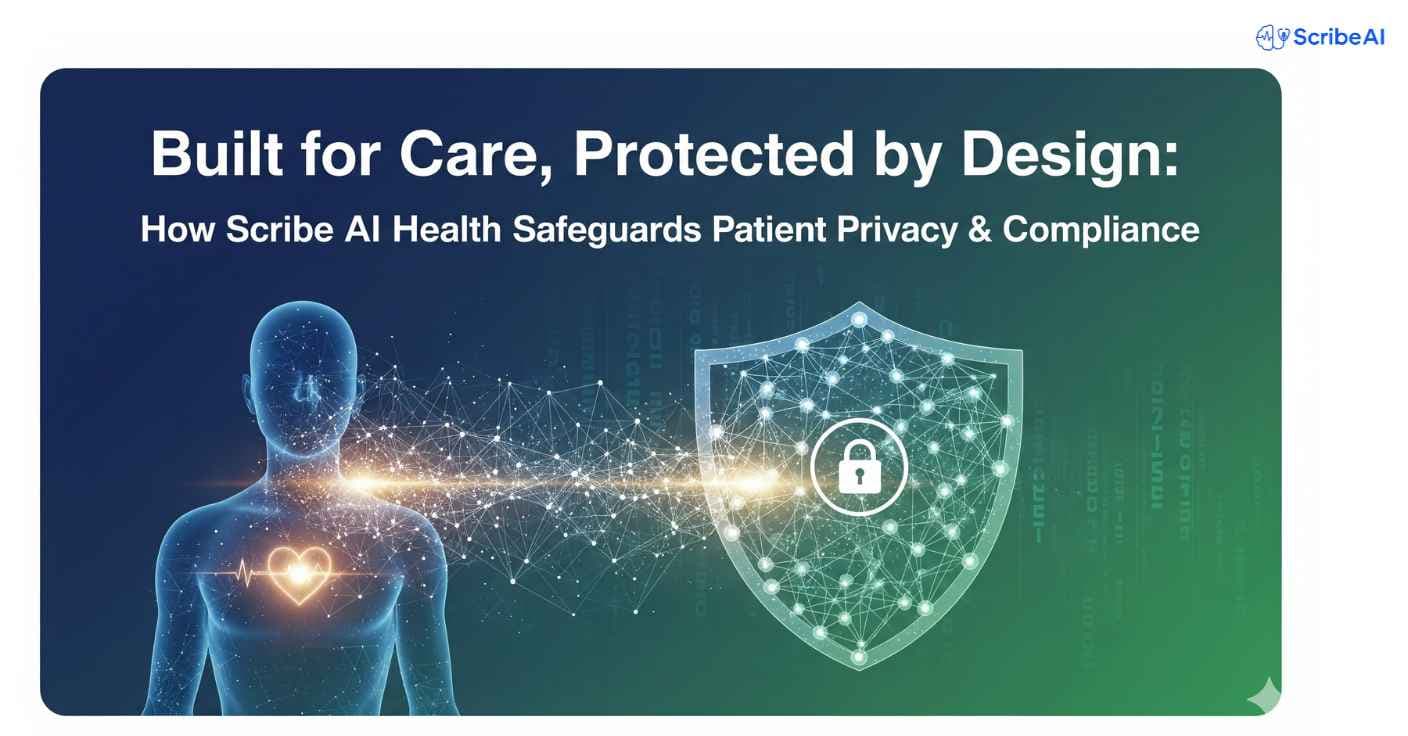
How AI Medical Scribes Are Revolutionizing Clinical Documentation: Efficiency, Accuracy and Reduced Burnout
Full of exciting potential, AI medical scribes are reinventing the way that healthcare professionals handle clinical documentation. Allowing clinicians to work without documentation, they enable high efficiency, guarantee document accuracy, and alleviate burnout because of the lack of need of documentation. At Scribe AI, the transformation is not theoretical; it is really on the ground. The tool is HIPAA-compliant, and allows to conduct transcription in real time and generate iterative SOAP notes with the use of AI, and integrates with EHR tools. ScribeAI is the example of how AI can benefit documentation workflow, notes quality and provider health. In the following blog, we will look at the history of documentation, the technological forces influencing AI scribes, the practical advantages of AI scribes, and how Scribe AI manages to embrace these advantages while proposing solutions to any emerging challenges they may face with knowledge and credibility.

Real Provider Stories: How Scribe AI Helps Clinicians Reclaim Their Time
Time has become one of the most useful and at the same time scarce resources of clinicians in the current healthcare system. Among the need to care about patients, writing, and the constantly increasing pressures of electronic health records, providers are dedicating increasing hours to documentation rather than meaningful face-to-face interactions. The Paper Reduction Act was supposed to help alleviate some of this pressure but in reality, a number of clinicians continue to be burdened with the burden of healthcare documentation. This is where AI medical scribes are creating an outstanding impact. As opposed to a manual approach to the process of taking notes or writing them down, using AI-powered tools is expected to capture patient encounters seamlessly and generate structured clinical notes and incorporate them into the electronic health record (EHR). However, even more so than efficiency, the human experiences are essential what is needed: the real-world experiences of providers that demonstrate how these tools are transforming workflows, making work less stressful, and, above all, contributing to the improvement of patient care, patient experience and patient outcomes. We present genuine provider insights, clinical case examples, and quantifiable outcomes in this blog that showcase the way Scribe AI is transforming healthcare delivery by returning time to where it is most needed the clinicians.

Simplify Your Clinical Practice: How Scribe AI with One-Click Nextech EHR Integration Transforms Documentation
The contemporary data-driven clinical setting is increasingly putting strain on clinicians, whether because of the excessive time spent on charting or physician burnout and administrative overload. In the Scribe AI survey, 58 percent of providers report burnout, and 2 hours of patient care are spent on paperwork, and that 4.6B of clinician turnover costs are an annual expense. An effective, streamlined documentation solution is no longer a luxury- it is a necessity. Enter Scribe with Nextech EHR- one-Click HIPAA-compliant, smart scribe captures, formats, and uploads clinical notes in your Nextech account in real-time. See 98.9% transcription accuracy, in-built ICD-10/11 code sets, multi-language, and integration with your EHR as you can continue monitoring the patient and not the display. This article goes into the detail of the knowledge, authority and reliability that are the basis behind this solution, how it handles daily clinical problems, the advantages of it being evidence-based and the reason why it is a reliable tool to hundreds of physicians.

Why Scribe AI Health Is Redefining Medical Documentation in U.S. Clinics
In today's ever-changing environment of healthcare, the burden of documentation continues to be one of the greatest obstacles facing clinicians in the United States. On average, physicians spend nearly twice as much time writing clinical notes and using electronic health records (EHRs), as they do directly care for patients. This lack of balance not only leads to burnout but also affects patient trust and satisfaction. This is where Scribe AI Health comes in--redefining the future of medical documentation. With its advanced capabilities in medical workflows through AI, Scribe AI is supporting providers in reclaiming valuable time, decreasing administrative overhead, and ultimately enhancing patient care. The transition to intelligent scribing solutions for US clinics is not simply a technological transformation; it's a redefinition of how care is provided and documented. This blog dives into why Scribe AI Health is at the forefront of healthcare documentation, why it's a good fit for initiatives like the Paper Reduction Act, and what it means for clinician and patient healthcare patient experience and patient outcomes.
.jpg&w=3840&q=75)
Recent Posts
The Silent Listener: How AI Notes Capture What Patients Really Mean
In 2025, healthcare is really changing at a rapid pace, but there's one skill that hasn't lost its importance: listening. Every doctor knows that what patients express can often be different from what they truly feel. A simple sigh, a pause, or even a shift in tone can sometimes say more than the actual words. Yet, in this age of electronic health records and busy schedules, it seems like doctors are spending more time typing than actually listening to their patients. Enter AI-powered medical scribes—think of them as the silent partners in the room. These smart systems don’t just jot down notes; they interpret and summarize conversations, helping doctors grasp not just the words, but also the emotions and context behind them. In this blog, we’ll take a look at how AI notes are starting to reveal what patients really mean, bridging that gap between human empathy and machine intelligence—while still keeping everything compliant, accurate, and trustworthy in clinical documentation.
.png&w=3840&q=75)
Leveraging Scribe for Compliance & Audit-Ready Documentation in 2025
In 2025, businesses from every corner of the industry are feeling the heat to keep their records in check. The regulations just seem to keep changing, right? Whether you're in finance, healthcare, IT, or any other field, having accurate, easy-to-access, and audit-ready documentation is more crucial than ever. That's where Scribe comes in—a next-gen, AI-powered documentation tool that's shaking things up in how organizations capture, manage, and share their processes. In this blog, we’re diving into how Scribe is transforming compliance and audit documentation. It’s all about helping teams stay on top of regulatory requirements while also making things more efficient and less risky.
_11zon%2520(2).jpg&w=3840&q=75)
Streamline Onboarding With Scribe: Using AI to Capture Workflows in 2025
In today’s fast-paced business world, there’s a lot of pressure on organizations to get new hires up to speed quickly, keep processes consistent, and lighten the load on HR and operations teams. Let’s be real—those old-school onboarding methods, like paper forms, endless email threads, and static checklists? They just don’t cut it anymore. They tend to be slow, filled with errors, and often leave new hires feeling a bit lost. So, here’s where Scribe steps in. It’s an AI-driven tool that documents workflows automatically, capturing what users are doing and turning that into easy-to-follow instructions. This can really help standardize how knowledge is shared across your organization. In this blog, we’re going to dig into how Scribe can make onboarding smoother, how AI can capture workflows, and what strategies you should consider for 2025 to keep your onboarding process efficient and ready for the future. Here’s what we’ll dive into: - Why traditional onboarding processes are falling short - How AI and workflow capture are shaping modern onboarding - The ways Scribe enhances onboarding workflows - A practical guide for implementation - Key metrics and best practices - Challenges, considerations, and future trends
